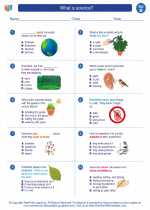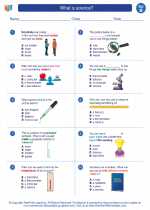Earthquakes
An earthquake is the shaking of the surface of the Earth resulting from a sudden release of energy in the Earth's lithosphere that creates seismic waves. It can cause the ground to shake, buildings to sway, and result in destruction and loss of life.
Causes of Earthquakes
Earthquakes are caused by the movement of tectonic plates beneath the Earth's surface. When these plates move, they can get stuck at their edges due to friction and pressure, and when the stress on the edge overcomes the friction, there is an earthquake that releases energy in the form of seismic waves.
Study Guide
- What is an earthquake?
- What causes earthquakes?
- How do tectonic plates contribute to earthquakes?
- What are seismic waves and how are they related to earthquakes?
- What are the effects of earthquakes on the Earth's surface and human structures?
- How can we prepare for and mitigate the impact of earthquakes?
Effects of Earthquakes
Earthquakes can cause widespread destruction, including landslides, tsunamis, and the collapse of buildings and infrastructure. They can also result in loss of life and displacement of populations.
Preparation and Mitigation
It's important to be prepared for earthquakes by having emergency kits, creating a family emergency plan, and securing heavy furniture and appliances. Building codes and construction practices can also be designed to mitigate the impact of earthquakes on structures.
Conclusion
Earthquakes are natural phenomena caused by the movement of tectonic plates. They can have devastating effects on the Earth's surface and human populations, but preparation and mitigation efforts can help reduce their impact.
[Earthquakes] Related Worksheets and Study Guides:
.◂Science Worksheets and Study Guides Second Grade. What is science?

 Worksheet/Answer key
Worksheet/Answer key
 Worksheet/Answer key
Worksheet/Answer key
 Worksheet/Answer key
Worksheet/Answer key
 Vocabulary/Answer key
Vocabulary/Answer key
